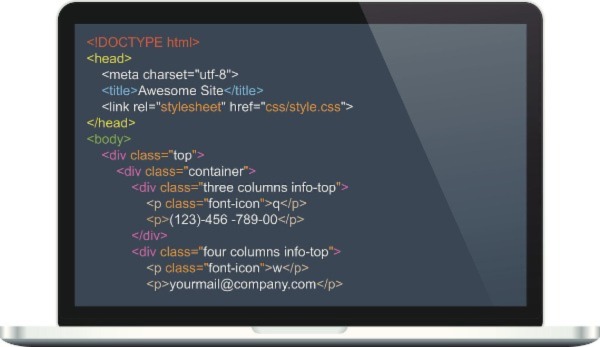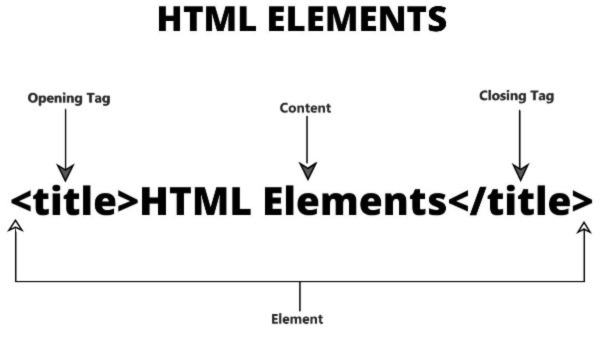
What is HTML?
We use HTML or Hyper Text Markup Language for web development, documentation, and internet navigation. It is imperial to know to hide code in HTML to hide content when we don’t want to delete the HTML content entirely or if we want to hide it to prevent prying eyes.
Now, HTML’s common purpose is for designing web browsers. Cascading Style Sheets (CSS) and JavaScript help with this purpose.
Web browsers receive HTML documents from any web server or a similar local storage area and produce the required content.
HTML elements build HTML pages. Some elements defined by tags such as <img /> to embed images are direct, whereas tags such as <p> need other sub-elements.
The “p” tag is a paragraph or a block of text. We can hide HTML code elements through this tag. Let’s see how it works.

How to Hide HTML Code Elements Work
Basic knowledge of HTML documents will let us know that every document has a <html> tag to begin with, and </html> to end. <head> is the head tag and <title> stands for the title tag, and <body> stands for the body tag, every such <> tags end with </>.
Followed by these basic tags are attributes, which are more information. One can learn how to hide code in HTML using hidden attributes.
An attribute example is:
<img src=” bill.jpg” alt=” A picture of the bill.”>
Here (src) is the image source, and (alt) is the alt text defining the image.

Image Source: codeamy.com
Steps to Hide HTML Code
HTML hide code or hiding code doesn’t work by deleting entire text from your website. We can keep the information we need for later by using an HTML tag so that the content stays in the HTML code, not in a browser.
There are small, manageable steps to help to perform this particular hide HTML code action.
Step 1
Start by launching the HTML editor. Then, from the program’s navigation bar, select “File” and “Open” to choose the file which needs hidden text.
Step 2
Next, identify the text, which needs hiding, present within the HTML document. Then, click before the first character of that particular block of code.
Step 3
To start editing, type “< “and then “! —” just before the first character of the text block. This open comment tag is the command letting the Internet browsers know to hide everything that follows until told otherwise.
Step 4
To finish, type “—” and then”>” at the end of the block of text. This closing comment tag is the command to the Internet browser to hide the HTML code between the open comment tag and this tag.
Step 5
Save the HTML document and preview it in a browser window. Let us know if the changes are over before uploading to a server.
Commenting Out
Commenting out is the process of providing comments to help developers and designers while we try to hide HTML code. It is a code of ethics rather than a step.
Other times, when we access the help of another person to develop our website, it is helpful to guide them using this approach.
Note that we must keep in mind that HTML comments are unique to this language, as other languages use different kinds of comments.
Using CSS for HTML Hide Code
Since HTML uses CSS, we can avail its properties to hide HTML code.
display: none
The “display: none” CSS property uses the style attribute to apply to an HTML element.
This property stops the display of the said element on the page.
For example:
<p style=”display: none”>Hide this paragraph. </p>
visibility: hidden
The “visibility: hidden” CSS property only hides the element in appearance.
The element is made invisible, but it is still available on the page.
For example:
<p style=”visibility: hidden”> Hide this paragraph. </p>
Additional information:
These methods only hide the HTML code from the display, and we or anyone can still access the source code and edit the hidden code.
Notepad, web editor, and developer studio support the hide HTML code syntax.
The selected browsers of Opera, Safari, Chrome, Edge, and Firefox support HTML hide code.
Hidden Attribute
We can use the Boolean attribute to overcome the issue of possible access to the hidden code. It is a hidden global attribute available in the HTML5 version and after that.
What Is a Hidden Attribute
An HTML hide code element or hidden attribute is a Boolean attribute that doesn’t allow browsers to display some aspects of the code. It is different from hide code HTML in that it establishes the element is unrelated to the HTML document.
Why Use Hidden Attribute as an HTML Hide Code
Hidden attributes allow visitors to open a web page only if they meet certain conditions. We can use javascript code to make the element visible after.
Additional information:
- We use the hidden attribute when we still want to reuse the text.
- The hidden attribute finds its purpose when the script is no longer relevant.
- The hidden attribute hidden elements are invisible but are theoretically active.
- The hidden attribute is still a risk when web page content access is possible because of the different resolutions of varied screen sizes.
- We have to make sure that there are no hyperlinks to the visible elements from the hidden elements.
Example Code:
<!DOCTYPE html>
<html>
<head>
<title>HTML hide element</title>
<style>
body {
text-align: center;
}
h1 {
color: red;
}
</style>
</head>
<body>
<h1>FUL</h1>
<h2>HTML Hide element</h2>
<button id=”btn”>DISPLAY HIDDEN TEXT</button>
<output id=”op”>(Hidden text will appear here)</output>
<textarea id=”ta” hidden rows=”5″ cols=”40″>This text area was hidden using the hide element</textarea>
<!– hidden paragraph –>
<p hidden>A TECHNOLOGY PROFILER</p>
<script>
document.getElementById(“btn”).addEventListener(‘click’, function () {op.innerHTML = ta.innerHTML;}, false);
</script>
</body>
</html>
Output:
FUL
HTML hide element
DISPLAY HIDDEN TEXT (Hidden text will appear here)
For more such articles visit our blog!


